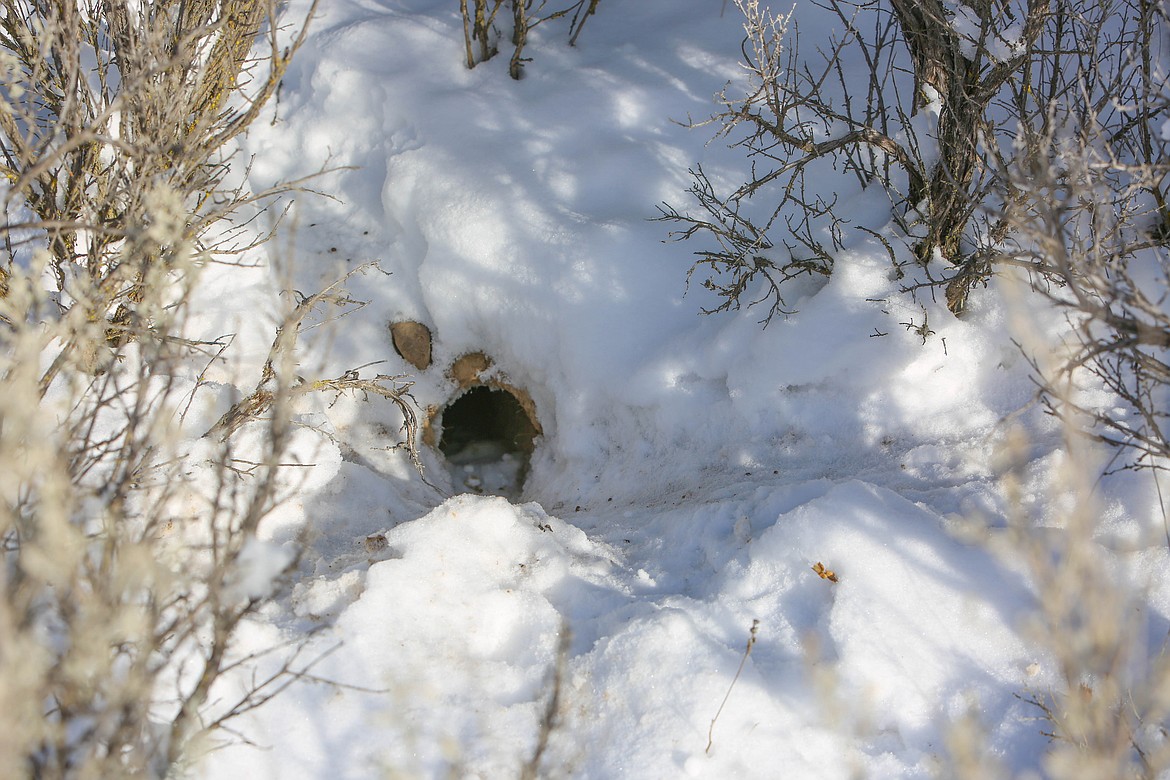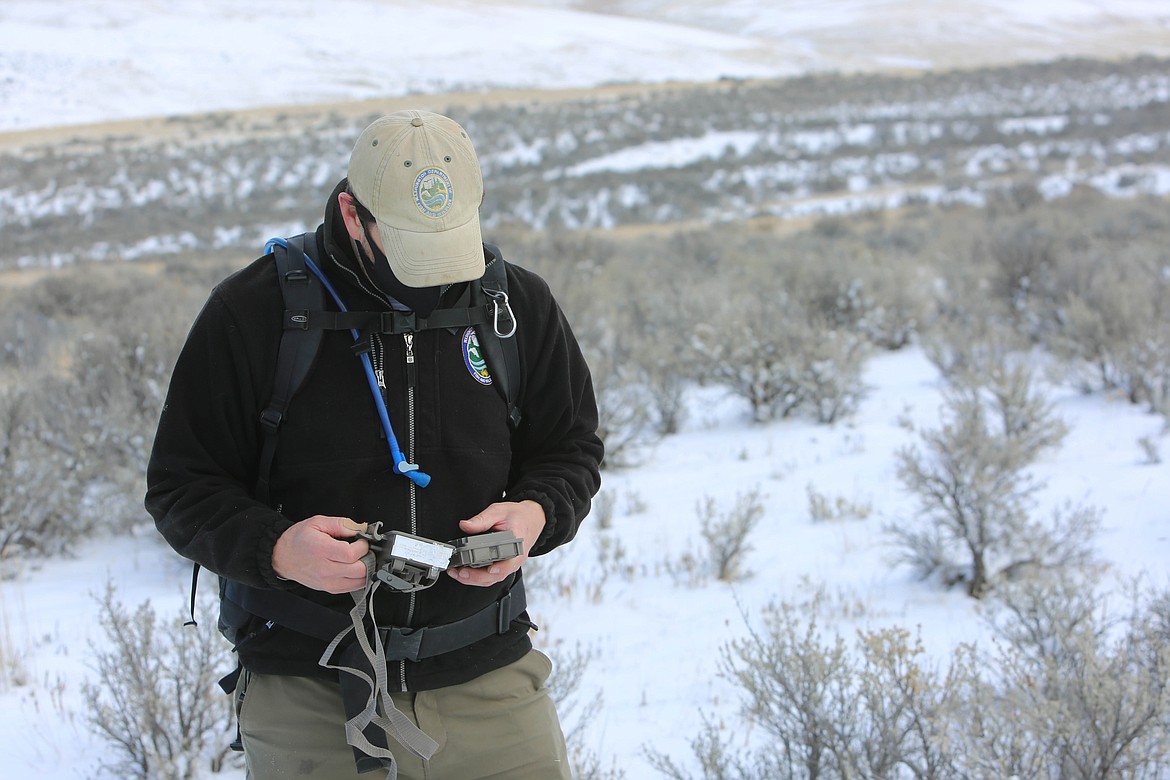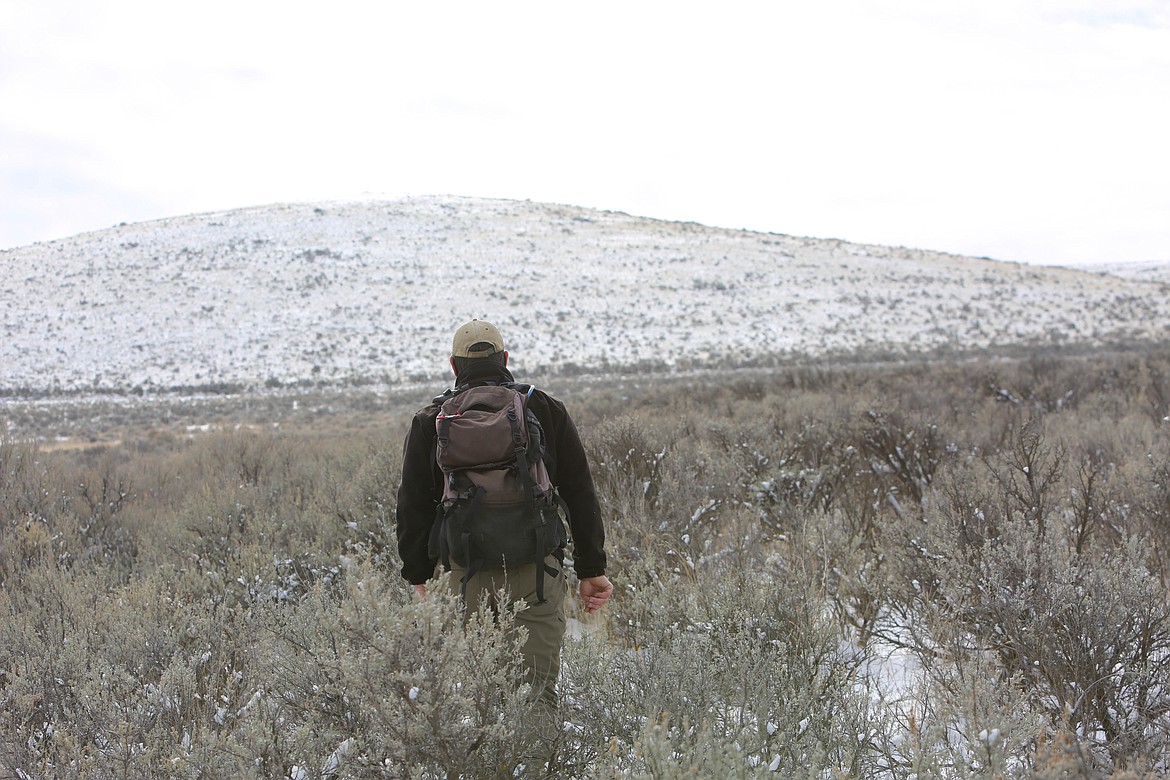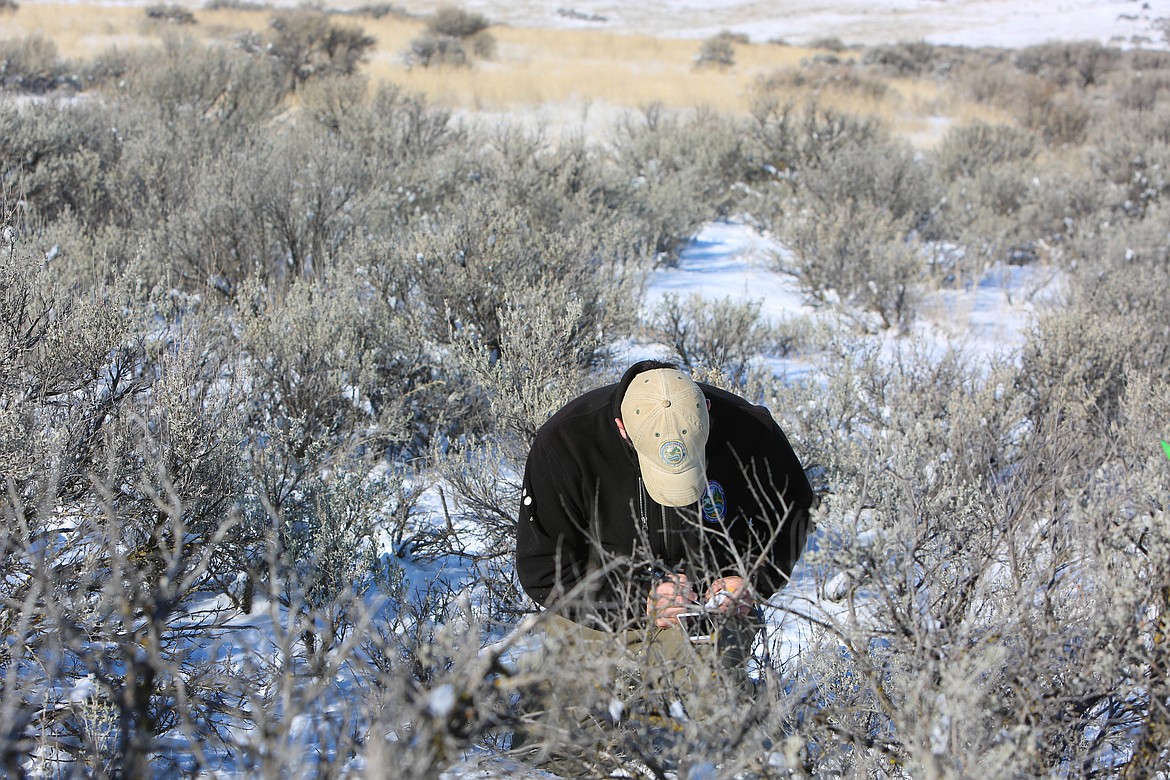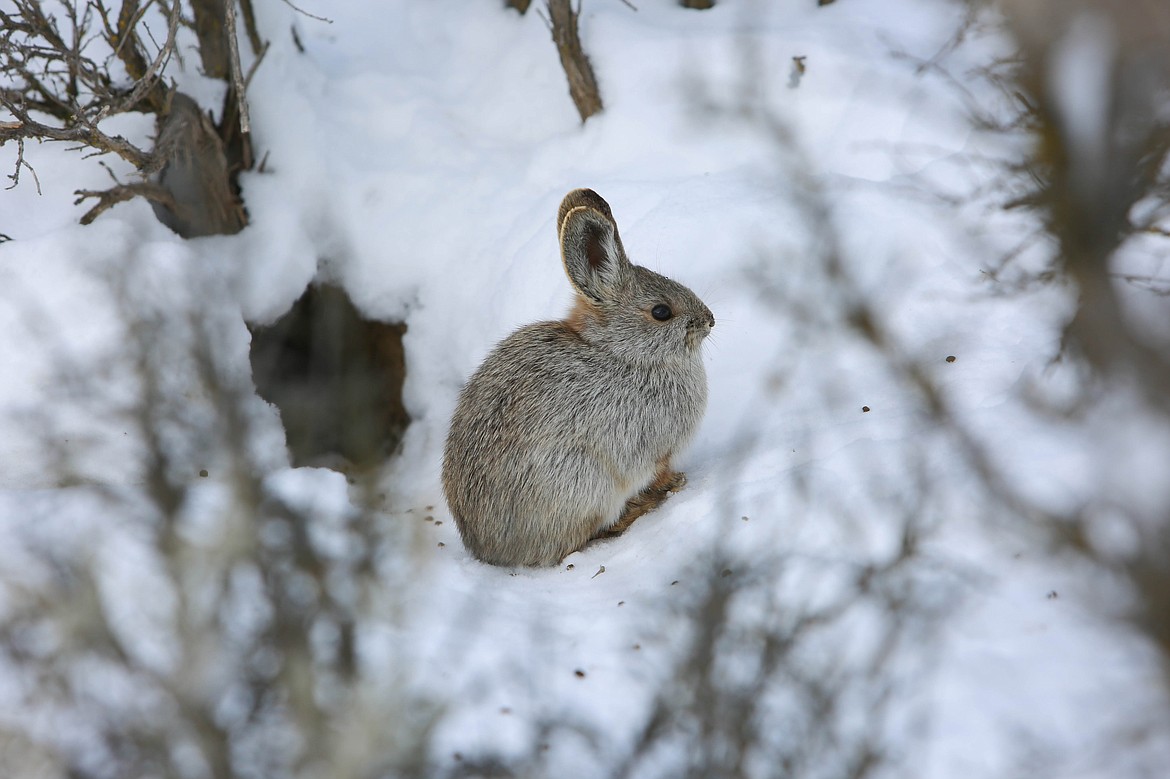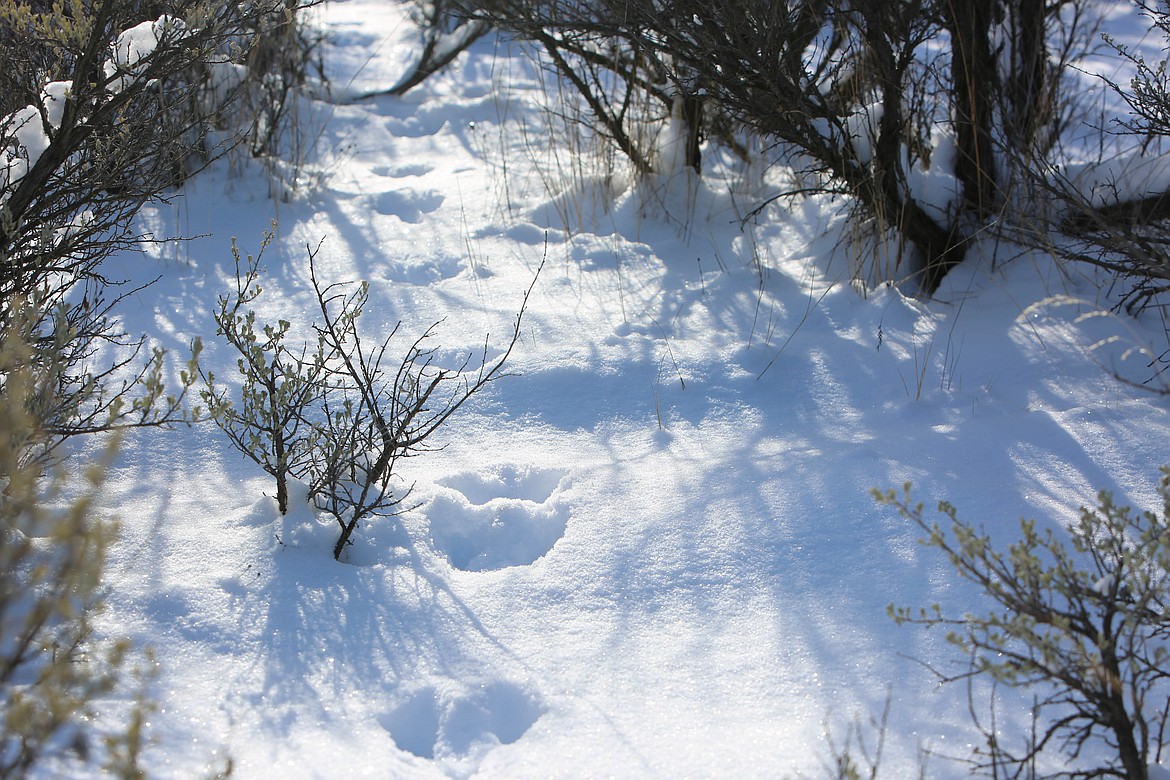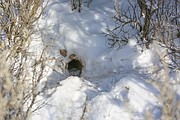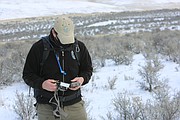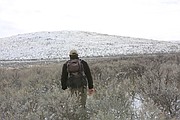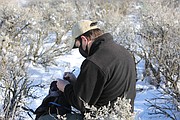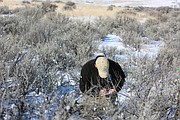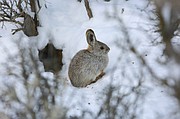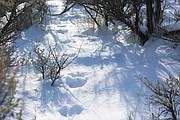Roller coaster to recovery: Local pygmy rabbit effort shows alarming numbers
GRANT COUNTY — Cutting through backroads of the Beezley Hills Preserve in February, about five miles north of Quincy, visitors might have to stop for a herd of 50 deer to cross.
They also might hear the morning howls of coyotes looking for a mate. And if they’re extraordinarily lucky, they might even see a critically-endangered Columbia Basin pygmy rabbit.
Ten years since the Washington Department of Fish and Wildlife began reintroducing these rabbits into the wild, the most recent effort, which began in 2011, is dominated by booms and busts, said WDFW biologist Jon Gallie. The department is in the process of its winter population calculations.
In years past, the department was very optimistic about pygmy rabbit recovery, Gallie said. These days, not so much.
“Our rabbit numbers are kind of like a roller coaster,” Gallie said. “They’re very much like salmon. Some years you just have huge booms and we have more than we can believe, and a couple years later, they crash, and they just disappear.”
The pygmy rabbit is the smallest rabbit species in North America, mostly gray, but can range to brown in color. It was emergency-listed as endangered in 2001 and has remained that way since. Estimates indicate less than 100 rabbits live in the Beezley Hills Preserve, even after efforts of breeding them in zoos in the 1990s and releasing them into the wild with pre-built homes in 2011 onward.
What’s best for agriculture is best for the pygmy rabbits – they like deep soil and dense vegetation, Gallie said. While human colonization initially drove out the Columbia Basin population, the most recent threats to the species is disease, brush fires and drought.
Pygmy rabbits are some of the only animals that can live exclusively on sagebrush, a plant that has evolved to be difficult to eat, he said. If cattle or deer ate the same proportional amount, it would kill them.
“If you think in geologic time, they’ve been here for tens of thousands of years,” Gallie said. “That role obviously has a function, and when you lose that it does just weaken your system.”
Pygmy rabbits have 20-some predators, Gallie said. Without the rabbits, those predators begin to prey on other species disproportionately. And, they are some of the only species converting sagebrush to manure and protein, cycling nutrients and enriching soil.
“Every ecosystem, every resource there is like a stack of Jenga sticks,” Gallie said. “Every species we lose, you take one block out.”
Further, as the decline of pygmy rabbits is indicative of declining habitat, they have become the canary in the coal mine – the first to dwindle, but far from the last.
Gallie climbs uphill to one of the sites of the first reintroduction effort. In 2011, the WDFW built four fences, each enclosing 6-10 acres, spread out in different areas.
“They’re like the Ritz-Carlton of enclosures,” Gallie said. “They had everything. They had artificial burrows dug in, portions of the wall dug into the ground, top wires to protect them, rapton netting from above, supplemental feed, irrigation.”
Indeed, they look like they could have housed bison at one point.
In four years since the start, around 2,000 rabbits were born. But in 2015, drought parched the population just before the rabbits developed a parasitic intestinal disease. Both of these events decreasing numbers, biologists realized they needed to switch courses, Gallie said. High density occupancy and manufactured mass productions of rabbits weren’t the key to long-term survival.
But what really pushed the pygmies off the edge was the fire in the summer of 2017, he said. The rabbit motel is now but a relic, a monument of what once was.
“The irony is you do everything you can to avoid predators, and you try and control everything, but then it’s like the littlest thing then comes up and gets you. So, nature just has a way of balancing out.”
Gallie sets his boot down on fresh, glittering snow, the first human to do so. Winter doesn’t lie. Other tracks sprinkle across the trail – deer, coyote and pygmy rabbit.
He follows the tracks up to active burrows, and a flash of gray ducks below the brush. It happens in a blink, nearly invisible, but Gallie can spot them from afar. To most, it’s like seeing a celebrity.
The department’s solution to disease and fires became “chicken tractors” Gallie said, loose fencing that could be moved to keep clean rabbits on fresh pasture. They also stopped all supplemental feeding and most protection against predators, a better way to simulate the wild.
“Basically, we threw them in here and said good luck,” Gallie said.
The rabbits don’t breed as quickly here, but their long-term survival rate is 40%, a bump from the 8-10% of the previous enclosure.
Every few years, the department will move these pens to prevent environment degradation as well as disease.
With increasing fires, though, they are running out of places to expand, Gallie said.
“You’re looking at the next available habitat, and it’s a mile and a half away, and there’s nothing but grass and fire scar in between,” he said. “Can our landscape support them? I don’t know. If that fire wasn’t there, everything might be occupied by now.”
As he hikes from fence to fence, surveying for rabbits and checking trail cameras, Gallie notices unrecorded active burrows. Here, he crouches down and adds notes into his app, which will be live-fed into the cloud, he said.
He also takes fecal samples and puts them in a little envelope to be sent to a genetics lab at the University of Idaho. From the DNA, scientists can determine if the new burrows are occupied by rabbits they released or those born in the wild. With diligent records, this is how the department approximates the rabbits’ total population.
The Pearl Hill fire in the summer of 2020 seared three years worth of release efforts, two breeding enclosures, four acclimation pens, 100 square miles of habitat and half of all Columbia Basin pygmy rabbits.
While the department doesn’t yet have an official number, Gallie estimates the rabbits’ current population size is less than 100, about the same as when the department started in 2011.
With all the habitat destruction, a long-term solution is far from guaranteed, Gallie said.
Pygmy rabbits only live two years. If the pattern persists, their numbers could become so critically low that it’s too late.
“We feel like we’re on a time crunch,” Gallie said. “You only get so many chances before another fire comes through or another disease outbreak hits, or you just don’t know.”
But there are creative paths forward.
In 1985, a federal farm bill passed called the Conservation Reserve Program (CRP). Through the program, farmers can enroll cropland – areas best suited for pygmy rabbits – where they can share the cost with the WDFW to plant habitat and provide erosion control, soil pollinators and moisture retention.
From the farmer’s perspective, the quality of CRP land is marginal, Gallie said. But to the rabbits, it’s everything. As much as 90% of the wild population was found in these areas at different times of the year.
The land helps more than rabbits, too. Sage grouse, sharp-tailed grouse, ground squirrels and others have been documented to benefit tremendously from these areas.
Gallie sees this as a win-win. CRP land helps threatened populations and serves as a tool for the farming community, he said.
Currently, around 200,000 acres are enrolled.
“It’s not a small blip on the landscape,” Gallie said. “It’s pretty impressive.”
But, the future of the Columbia Basin pygmy rabbit is uncertain. Most years can be labeled with a major event in their recovery, Gallie said: drought year, boom year, disease year, fire year.
The pygmy rabbit breeding season is from the end of February to June. In a season, scientists have seen the population double and they’ve seen it decline by 90%, Gallie said.
Time will tell what this year brings.




